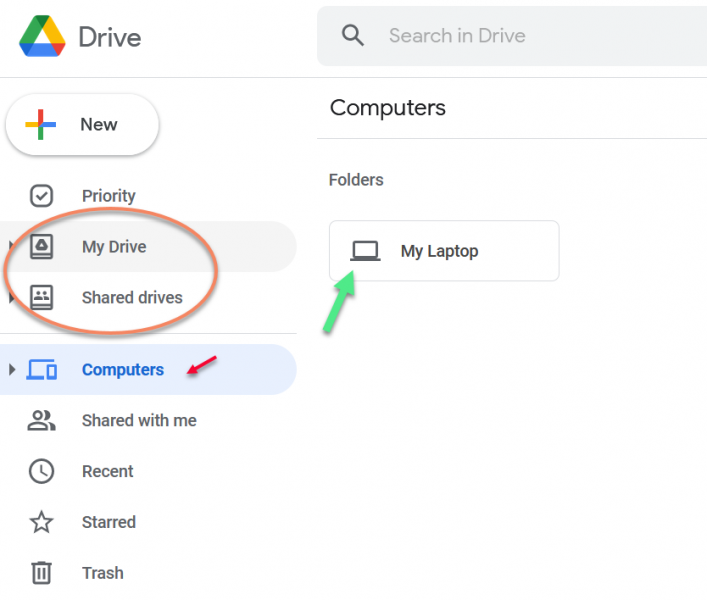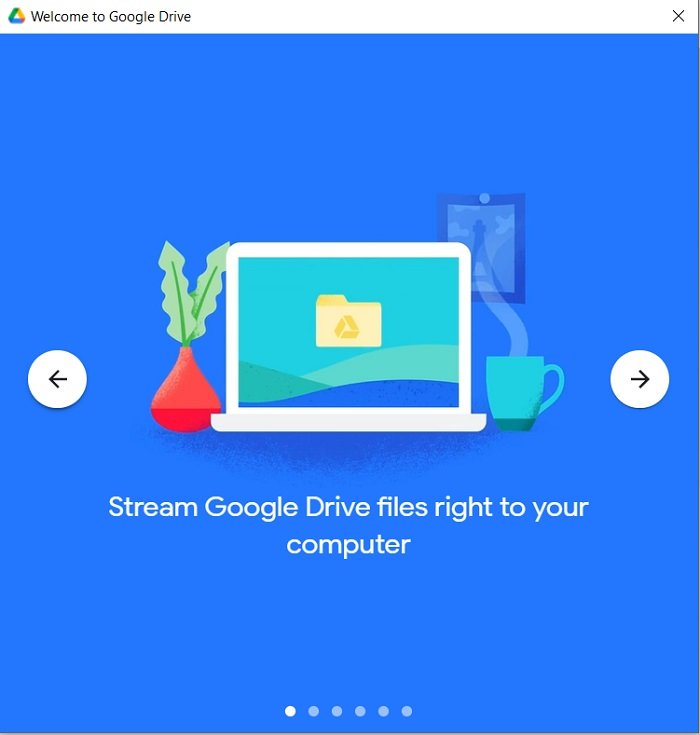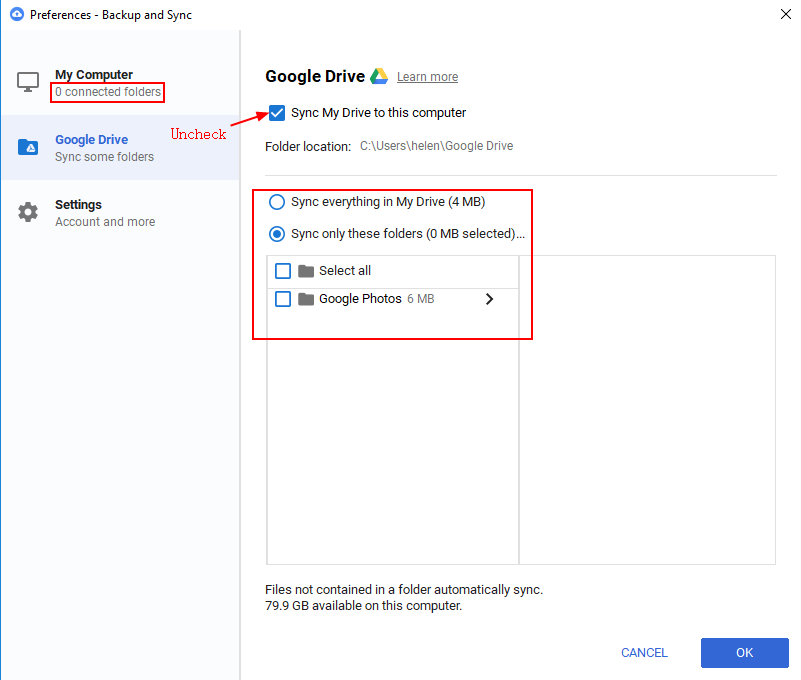
- #Put desktop on google drive backup and sync free#
- #Put desktop on google drive backup and sync mac#
- #Put desktop on google drive backup and sync windows#
#Put desktop on google drive backup and sync mac#
Generally reliable cloud backup and collaboration tool.Īn application that integrates with my Mac desktop, and Firefox and Chrome browsers, making cloud backup easy and cheap with a bit of command-line stuff from me.
#Put desktop on google drive backup and sync free#
Review: Google Drive (now "Backup and Sync") 100GB + 31GB Free Now I'm protected against my house burning down, along with laptop failure/theft and fumble-fingered idiocy, hurrah! Just occasionally I open up Time Machine and make sure that I can pull up an old version of a file, ie that the backups are actually doing something!Ībout once a week, or maybe when I'm not at home near my external drive, I fire up Google Drive itself (otherwise off to save power and bandwidth and snooping opportunities) and let it sync stuff to the cloud. When it's done, I eject and unplug the G-DRIVE, saving power (and carbon), untethering my laptop from the desk, And I make a calamity such as a ransomware virus or a power surge or other bad bug, or just a fumble-fingered 'delete everything' command, much less likely to wipe out my backups along with the laptop itself.īackups are there to protect both against hardware failure (and malware), and also against a user error deleting more than they intended. I let Time Machine take a backup, usually lasting a few minutes. Typically once per day, while drinking my first cup of tea and with my brain still too asleep to do much else, I plug in to my MacBook my G-DRIVE USB external disc/disk/HDD. So for me, the Mac is the centre of my backup attention. Copies of individual file updates for Web sites, etc, tend to be captured in backups daily. I tend to do significant backups of my RPi content, such as copies of entire SVN repositories, one or two times per year. So, a little less money to Google each month for storage fees, for a start. I might even be breaking UK/EU law to store that stuff in a place where they can grab it. By and large I try to keep other people's personal data, and any passwords, away from Google Drive, as the US government does not have a good record on respecting privacy. Public stuff gets put in the Google Drive to end up in the cloud. Everything ends up on an Apple "Time Machine" backup on a USB-connected external drive (see below). I move copies of some of its key files, such as backups of some repositories, to the laptop to be backed up from there. Periodically I copy the memory stick to my Mac, so that the files make their way into my main backup as described below.Īctually I mainly treat the RPi the same.


We back that up with a copy of files we care about to a memory stick, keeping a current and previous copy at all times.
#Put desktop on google drive backup and sync windows#
To get the Windows laptop out of the way.

Support Earth Notes with Patreon and Ko-fi! Second lappy and RPi The ability to supply reliable cloud service cheaply is one measure of resource efficiency. (Beyond the small-scale Flash-based storage that I make available from my off-grid server.) Indeed, real cloud storage should be muchĬheaper and bigger, and resistant to being destroyed if my house burns down. I assume that cloud storage by the byte stored per month will be far more efficiently managed in terms of energy (and thus carbon) than I can manage at home with an always-available solution. That's maybe ~£3 and ~26kWh and ~10kgCO2 per year! It uses only a tiny amount of energy when active (typically tens of minutes per day at ~5W).

Just using an USB-powered external disc, and unplugging it when not actually backing up (all will become clear later) saves ~3W continually. What I avoid is leaving any networked backup systems switched on permanently, drawing power, and being at risk of failure or compromise. But also my Raspberry Pi (RPi) server, and a second (Windows) laptop. Mainly my MacBook (which I'll focus on here). I have two or three things to backup as of late 2017. KISS (Keep It Simple Stupid) is best, or it just won't happen! Remember to run the occasional test so that you know that your files are really there when you need them back. In the past I put together the scheme for a major international bank. I have designed and implemented backup systems for me and my businesses for decades, involving everything from paper hard copy through tape to cloud. Maybe you'd like to defend against the latest round of ransomware contagions too. And it should ensure that you're unlikely to lose more than (say) one day's work if your gadget is lost or stolen or the building it's in catches fire. Generally with a backup scheme you'd like something which does not cost a fortune. Measuring Our Electrical Appliance Energy Consumption Backup Scheme.


 0 kommentar(er)
0 kommentar(er)
